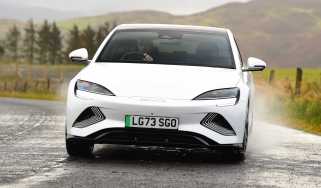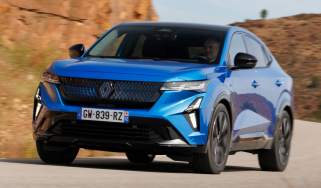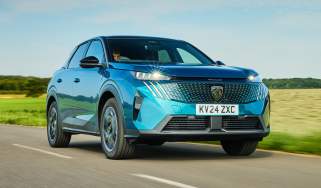Car engine sizes explained: what engine size do you need?
Confused by the different engine sizes offered in petrol and diesel cars? Here are the pros and cons of each and tips on making the right choice
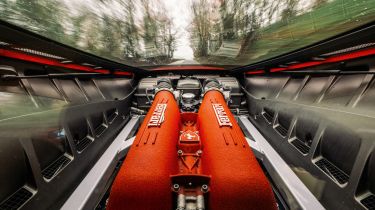
Assuming you’ve not already made the decision to step into a fully electric car, then the next car you buy will have some sort of engine. ‘Some sort’ undersells the complexity of it a little too, as most manufacturers still offer more than one engine in each of their vehicles, and these engines can have quite different characteristics, strengths and weaknesses.
One of the key differences between engines has always been size, a term that generally refers to the engine’s capacity, most commonly referred to (in all but a handful of countries) in litres. You might see engines referred to as 1.0, 2.2 or 4.2-litre engines and this relates to the capacity in the cylinders, the established measure of engine size. These sizes are also occasionally presented in cubic centimeters (cc), a more precise measurement where a 1.2-litre engine might in fact be 1,139cc or a 4.2-litre might be 4,172cc.
While there’s not as much engine variety as there used to be, there’s still quite a range of sizes available depending on the car you’re looking at. But what’s the significance of engine size, what are the most common sizes in modern cars, and what are the pros and cons of smaller and larger engines? Read on to find out…
Most common engine sizes
Car manufacturers have long gravitated towards certain engine sizes based on various factors, such as taxation in different countries (an example of this being Japan’s 660cc limit for its kei cars) or engineering constraints.
Those factors and more – not least electric power slowly taking over from combustion engines, resulting in reduced internal combustion engine development – mean there’s probably less variety of engine types and sizes than for a century or more. This does, at least, make it easy to narrow down modern engines into just a few groups.
Three-cylinder engines
The first are the small three-cylinder engines, typically between around 1.0 and 1.5 litres in capacity. These tend to be used in smaller cars but as they’re almost always turbocharged (there are exceptions, like the naturally-aspirated ones used in the Toyota Aygo X or Kia Picanto), it’s not unusual to find them in cars the size of the Volkswagen Golf, or even some SUVs, especially in hybrid form when they have electric motors to make up for their relatively small capacity.
Four-cylinder engines
Next up you’ll tend to find slightly larger four-cylinder engines – most are between 1.6 and 2.0 litres in size these days and most are turbocharged, though there are still outliers, such as Mazda’s naturally-aspirated (without a turbo or supercharger) 2.5-litre four-cylinder petrol in the Mazda 3 and CX-30, or the 2.8-litre four-cylinder turbodiesel in the Toyota Land Cruiser. A 2.0-litre turbocharged four-cylinder, though, is one of the most common engine formats on the market.
Six-cylinder engines and larger

Most prestige carmakers also offer engines of around 3.0 litres, usually either as an inline six-cylinder or V6, while engines of 4.0-litres and above tend to be in the form of V8s, V10s or V12s – though V10s and V12s are getting rare, and you’ll generally find V8s only in high-performance cars today. Even then, the likes of Ferrari and McLaren are beginning to replace their naturally aspirated V8 engines with hybridised V6s.
Pros and cons of smaller engines
The main reasons you might buy a car with a smaller engine are price and fuel economy. This is pretty logical – smaller engines tend to be fitted to smaller, lighter cars. There’s a limit to how much fuel a smaller engine can burn too, and as small engines tend to have fewer moving components, there’s a virtuous circle of less friction and lighter parts that also contributes to their economy, and results in lower maintenance costs too.
They aren’t as performance-limited as they used to be either, since turbocharging and hybrid technology mean even a 1.0-litre engine today can have the performance and pulling power of a 1.6 or even a 2.0-litre engine from a few decades ago. Their compact size and light weight is also beneficial for packaging (a smaller engine means more space for passengers, in theory) as well as ride and handling.
Small engines aren’t without their limitations though. Ultimately performance will begin to suffer if you want to power a bigger, heavier car, and economy will take a dive too as a smaller engine will need to be worked harder to keep up the same pace as a larger and more powerful engine. Depending on the application, the engine can be under more stress too – asking a 1.0-litre engine to make the same power and torque as an engine twice the size may affect its durability and reliability.
Pros and cons of larger engines
If economy is the biggest benefit of a smaller engine, then power and torque are the main benefits of using a larger engine. More capacity equals more room for combustion in the cylinders, and bigger bangs – there’s some truth in the old adage “there’s no replacement for displacement”.
Generally speaking, a larger engine won’t have to work as hard to develop power either – while you can find high-revving screamers, larger engines have more muscle at lower engine speeds, even without the use of turbocharging. That in-turn can mean fewer engine revs are needed and more relaxed progress is possible, so contrary to what you might expect, larger engines can also be quieter than smaller ones. They’re smoother too – six, eight, ten and twelve-cylinder engines are better balanced than threes and fours, with more cylinders to cancel out the vibrations caused by their counterparts.
On the downside, larger engines tend to use more fuel than smaller ones, albeit mainly on the basis they’re generally used in bigger, heavier cars. Maintenance costs are also higher for the most part – think more spark plugs or injectors to service or replace, physically larger components, potentially more belts or chains to check or replace.
Where smaller and larger engines are available in the same car, you may also feel a ride and handling difference between the two models – the larger engine will tend to be heavier which means more mass for the suspension to control. However, this will sometimes be offset by the larger-engined vehicle getting a sportier setup or being an outright performance model, like the difference between a BMW 320i and a BMW M3, so the compromise isn’t always evident.
Should you buy a big or small engine?
Ultimately whether you go for a car with a smaller engine or a larger one will depend on your own needs, and budget. Put simply, if you’re shopping for a smaller, cheaper car, then you can expect it to come with a relatively small engine, and if you’re in the market for a high-performance or luxury car, then you’ll likely get a larger engine by default.
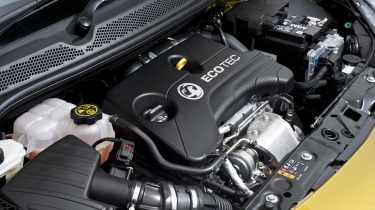
There are exceptions to every rule of course, and the waters have been muddied in recent years by the prevalence of hybrid technology – the power and torque of electric motors means that it’s easier to get away with a small engine in a pretty big car now without many of the compromises mentioned above.
You can expect to pay more for the privilege of hybrid technology – how does more than £50,000 for a 1.6-litre Hyundai Santa Fe, or nearly £100k for a 2.0-litre, four-cylinder Mercedes-AMG C63 sound? – but electric assistance has made a real difference when it comes to balancing economy and performance in petrol cars.
Some things remain constant though. A small engine in a small car is an easy route to low running costs and good real-world economy, while there’ll always be a thrill to driving a car with a big, powerful engine.
Did you know you can sell your car through Auto Express? We’ll help you get a great price and find a great deal on a new car, too.
Find a car with the experts



